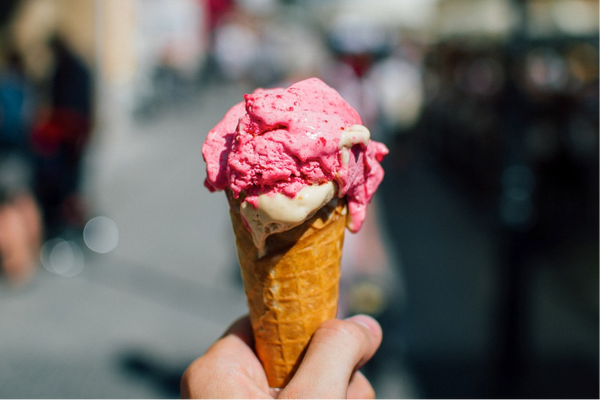This article was published in Scientific American’s former blog network and reflects the views of the author, not necessarily those of Scientific American
Trying to lose weight? Looking for a plan that doesn’t involve counting calories or crossfit? Well look no further; I hereby present to you the false memory diet, pioneered by Elizabeth Loftus and her colleague Daniel Bernstein. These two were among the first researchers ever to ingeniously apply the power of memory science to making us less fat.
They did this by planting food aversions in peoples’ minds.
Dill pickles and strawberry ice cream
On supporting science journalism
If you're enjoying this article, consider supporting our award-winning journalism by subscribing. By purchasing a subscription you are helping to ensure the future of impactful stories about the discoveries and ideas shaping our world today.
Here’s how it worked. The researchers asked people to fill out a questionnaire about their favorite foods. A week later the participants were told that their answers had been entered into a computer which had done a complex analysis of their food preferences and could identify what their early childhood experiences with food must have been like. Based on this supposedly sophisticated profile, participants were then told that when they were young they either “got sick after eating a hard-boiled egg’’ or ‘‘felt ill after eating a dill pickle.’’
Of course, this was a lie - there was no computer, and they had never gotten sick from eating dill pickles. Nonetheless, most participants indicated that they believed this feedback, and were able to picture their bad experience. When given another food questionnaire, they then reported liking pickles and eggs less and being less willing to eat them in the future.
Of course, saying you are not going to eat something is not the same as actually not eating something. To test this distinction, researchers tried further experiments where they swapped out the eggs and pickles for other foods, and actually offered them to participants at picnics, parties, or in the lab. Those who were told they had bad experiences consistently said they liked those foods less, and actually ate less when given the chance.
The list of foods researchers tried this with is surprisingly long, successfully creating long-lasting food aversions for strawberry ice cream, white wine, rum and vodka, peach yogurt, egg salad, dill pickles, and hard boiled eggs.
Engineering healthier food choices
So, we can make people eat less strawberry ice cream and fewer dill pickles, but what about making them eat more of a healthy food? If your leeks are struggling to find buyers, or your yams don’t have the fan-base they used to, you can rest assured that applying memory science to promoting healthy food choices works too.
It was the asparagus industry that spearheaded the research on whether people could have false memories of positive food experiences. In this research, instead of being implanting food aversions, participants were told the lie that they loved asparagus the first time they tried it.
Those who were given positive misinformation subsequently said that they liked asparagus more, rated a picture of it as more appetizing, and were even willing to pay more for it at the grocery store.
Homemade food aversions
Have I made you curious? Want to take a shot at the false memory diet? Here’s how you can do it at home.
According to Elizabeth Loftus you could start with “covert sensitization”. This is the process whereby you repeatedly picture getting ill from the food you want to eat less of. More imagination is going to give you better results. If you really think about what you would be feeling, seeing, hearing, and smelling during the situation it will help you generate stronger multisensory false memories (which I also do in my research, where I convince people they committed crimes that never happened).
For example, say you want to eat less strawberry ice cream; you would picture the sensation of eating strawberry ice cream, followed by feeling nauseous, lightheaded, and finding yourself hurling into the porcelain thrown. The goal is to make you ill every time you think about, or actually encounter, the food.
To maximize your chances of success you can use the disgust-factor to your advantage. Foods that we are naturally more disgusted by will work better with the false memory diet, which according to scientists Yolanda Martins and Patricia Pliner are foods high in meat or fat, and foods that are slimy. Luckily, lots of foods that are bad for you have these characteristics - think hamburgers, butter, custard… you name it.
Best of luck with your newfound diet super-powers. Please use them responsibly.
This post is part of a series of articles called “Memory Mondays”, which focus on debunking common misconceptions and beliefs about how our memory works.
